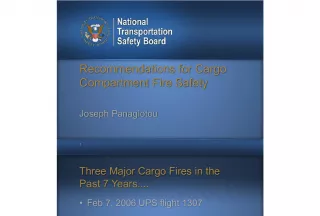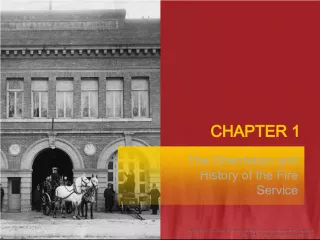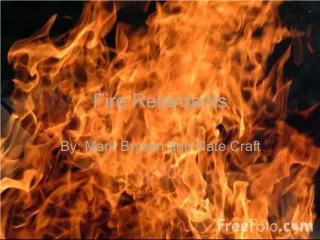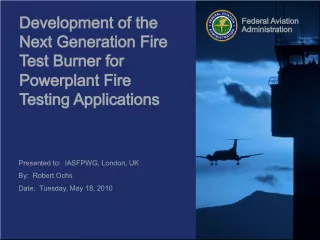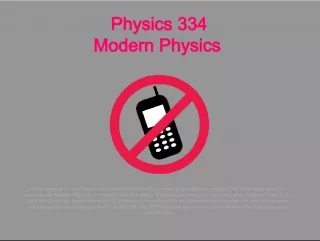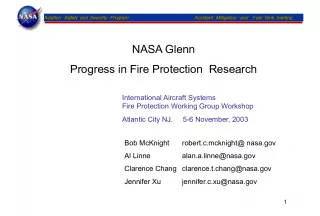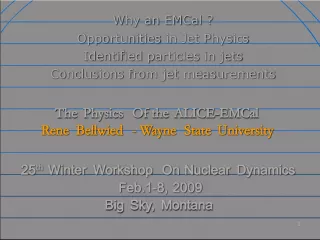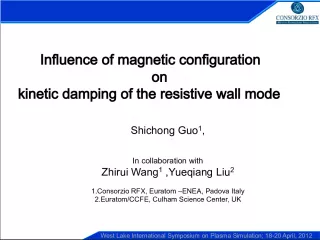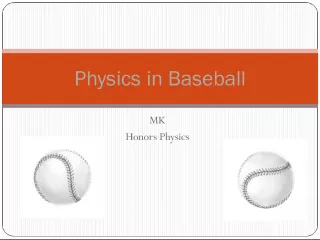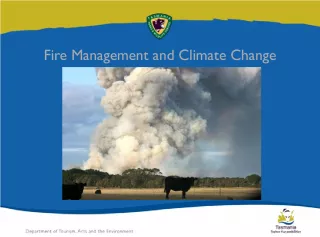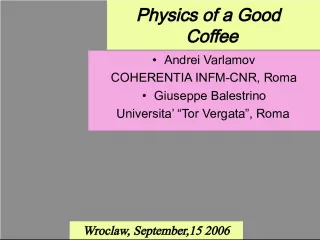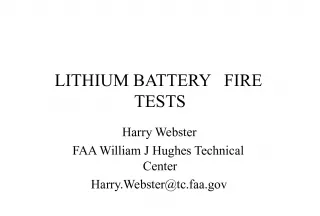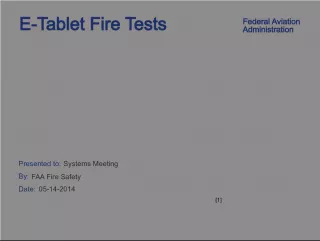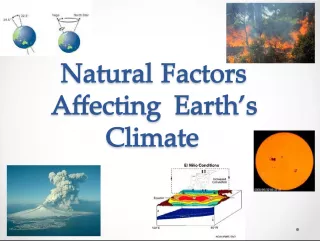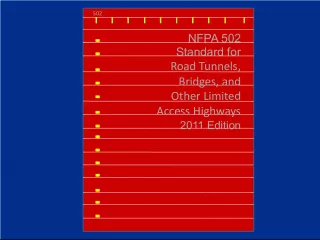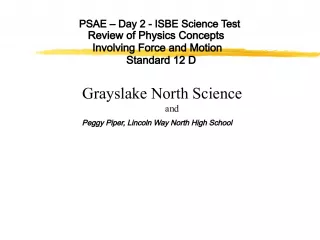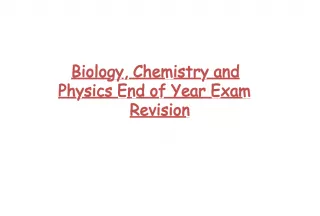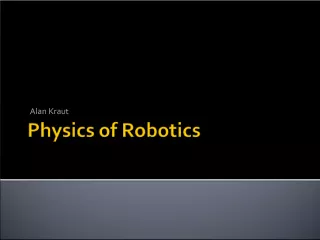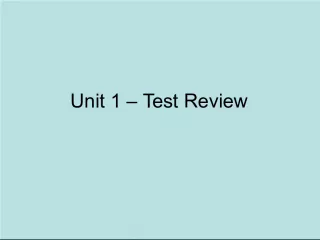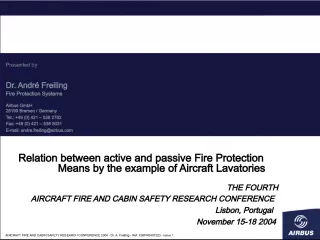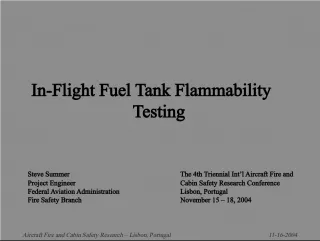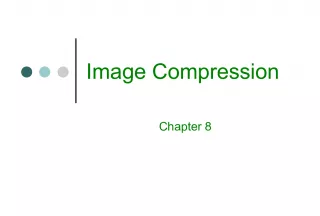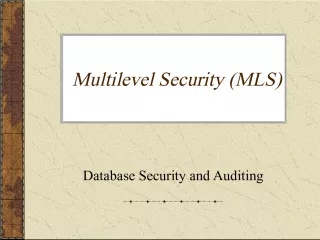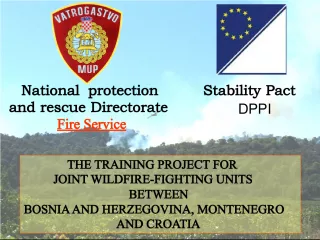LES of Vertical Turbulent Wall Fires: Understanding Physics and Reducing Fire Losses
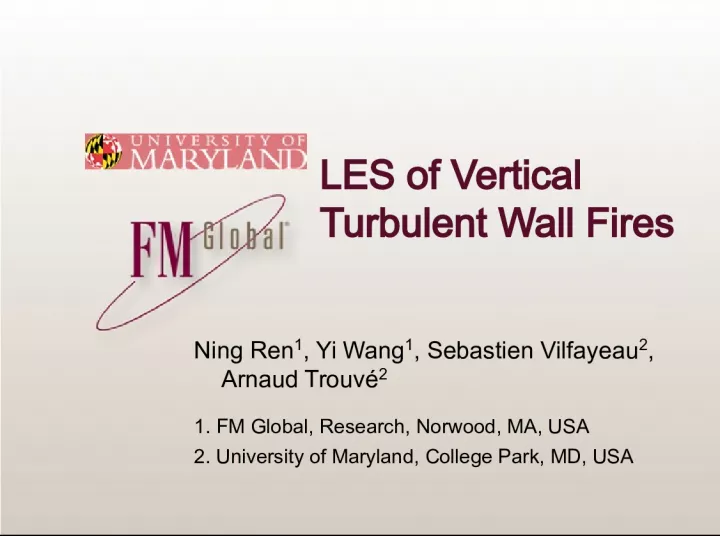

This study conducted by Ning Ren, Yi Wang, Sebastien Vilfayeau, and Arnaud Trouve from FM Global Research in
- Uploaded on | 3 Views
-
 kristinsimpson
kristinsimpson
About LES of Vertical Turbulent Wall Fires: Understanding Physics and Reducing Fire Losses
PowerPoint presentation about 'LES of Vertical Turbulent Wall Fires: Understanding Physics and Reducing Fire Losses'. This presentation describes the topic on This study conducted by Ning Ren, Yi Wang, Sebastien Vilfayeau, and Arnaud Trouve from FM Global Research in. The key topics included in this slideshow are . Download this presentation absolutely free.
Presentation Transcript
Slide1LES of VerticalTurbulent Wall Fires Ning Ren 1 , Yi Wang 1 , Sebastien Vilfayeau 2 , Arnaud Trouvé 2 1. FM Global, Research, Norwood, MA, USA 2. University of Maryland, College Park, MD, USA
Slide2Background Industrial-scale fire tests – Reduce fire loses – Expensive – Limited configurations Fire modeling – Understand physics – Reduce large scale tests Challenges – Multi-physics – Multi-phases Slide 2 6 m
Slide3Slide 3Background
Slide4Tools – FireFOAM Open-source fire model (FM Global) – www.fmglobal.com/modeling (2008-Present) Based on OpenFOAM – A general-purpose CFD toolbox (OpenCFD, UK) Main features – Object-oriented C++ environment – Advanced meshing capabilities – Massively parallel capability (MPI-based) – Advanced physical models: • turbulent combustion, radiation • pyrolysis, two phase flow, suppression, etc. Slide 4
Slide5Slide 5Background • Multi-physics interaction • Difficult to instrument • Vertical wall fire is a canonical problem • Industrial-scale Fire Test
Slide6Background Experiments – Orloff, L., et.al (1974) PMMA – Ahmad, T., et.al (1979) – Markstein, G.H., de Ris, J. (1990) – de Ris, J., et.al (1999) Modeling – Tamanini, F. (RANS,1975) PMMA – Kennedy, L.A., et.al (RANS,1976) – Wang, Y.H., et.al (RANS, 1996) – Wang, Y.H., et.al (FDS, 2002) – Xin, Y. (FDS, 2008) Slide 6 Orloff, L, et.al (PMMA) Challenges – High grid requirement – Buoyancy driven – Mass transfer – Reacting boundary flow
Slide7Experiments – Prescribed flow rates – Propylene – Methane – Ethane – Ethylene Water cooled vertical wall Diagnostics – Temperature – Radiance – Heat flux – Soot depth Slide 7 (J. de Ris et al., FM, 1999) (J. de Ris et al., Proc. 7 th IAFSS, 2002)
Slide8Grid requirement Momentum driven flow (Piomelli et al., 2002) Natural convection (Holling et al., 2005) Wall Fires – 10~20 cells across the flame • 3mm to start Slide 8 2 cm
Slide9Mesh and B.C. Base line – 3 mm grid – ΔY ~ 3 mm, ΔX ~ 7.5 mm, ΔZ ~ 7.7 mm (ΔX :ΔY :ΔZ ~ 2.5:1:2.5) – 0.8 M cells, CFL = 0.5 – 1.5, 2, 3, 5, 10, 15 and 20 mm B.C. – Cyclic (periodic) in span-wise – Entrainment BC at the side – Fixed temperature, T = 75 ˚C – Propylene • 8.8, 12.7, 17.1, 22.4 g/m 2 s Slide 9
Slide10Turbulence ModelSlide 10 Zero for pure shear flow O(y 3 ) near wall scaling Two deficiencies: 1. Laminar region with pure shear 2. Wrong scaling at near wall region O(1) instead of O(y 3 ) K-equation model WALE Model No need to calculate k sgs Wall adaptive local eddy viscosity model
Slide11Wall-Adaptive Local Eddy ViscositySlide 11 K-Eqn Model WALE Model
Slide12Combustion Model Eddy Dissipation Concept (EDC model) – Mixing controlled reaction Slide 12 K-equation model WALE model
Slide13Slide 13Combustion Model Eddy Dissipation Concept (EDC model) – Mixing controlled reaction Turbulence reaction rate Diffusion reaction rate
Slide14Radiation Model Fixed radiant fraction Finite volume implementation of Discrete Ordinate Method (fvDOM) Optically thin assumption Soot/gas blockage ( χ rad is reduced by 25%) Slide 14 Fuel Methane CH 4 Ethane C 2 H 6 Ethylene C 2 H 4 Propylene C 3 H 6 Wall Fire (de Ris measurement) 15% 17% 24% 32% Simulation (account for blockage) 12% 13% 18% 25%
Slide15Slide 15Flame topology K K m/s m/s m/s m/s span-wise wall-normal stream-wise
Slide16Slide 16Flame topology Wallace, J.M., 1985 kg/m/s kg/m/s Q , wall-normal view
Slide17Slide 17Heat flux – (de Ris Model) Blockage Side-wall Flame radiation temperature Flame emissivity Soot volume fraction Soot depth Heat transfer coefficient Fuel blowing effect
Slide18Slide 18Grid Convergence ( =17.1 g/m 2 s, C 3 H 6 ) Fully Turbulent Fully Turbulent Fully Turbulent
Slide19Slide 19Heat Flux – Flow Rates ( Δ =3 mm, C 3 H 6 )
Slide20Slide 20Heat Flux – Fuels ( Δ =3 mm)
Slide21Slide 21Convective Heat Flux: Blowing Effect Pyrolysis Zone Flaming Zone Pyrolysis Zone Flaming Zone 17.1g/m 2 s
Slide22Slide 22Temperature (C 3 H 6 )
Slide23Summary and future work Summary – Near wall turbulence and combustion models are important – Good agreements are obtained for wall-resolved modeling – 10~20 cells across the flame are needed – Convective heat flux is important in the downstream flaming zone Future work – Test soot model for radiation – Improve turbulence and combustion models for coarse-grained modeling – Wall function study Slide 23
Slide24Ongoing work – wall function Log-Law Blowing effect (Stevenson, 1963) Slide 24
Slide25Slide 25Ongoing work – wall function ( Δ =15 mm) (17.1 g/m 2 s, C 3 H 6 )
Slide26Slide 26Ongoing work – wall function Fuel blowing effect ( Δ =15 mm)
Slide27Acknowledgement John de Ris Funded by FM Global – Strategic research program on fire modeling Slide 27
Slide28Slide 28Temperature (C 3 H 6 )
Slide29Slide 29Temperature – Elevation (17.1 g/m 2 s, C 3 H 6 ) Inner layer Outer layer
Slide30Coarse grid Convective heat flux – Temperature gradient – Combustion Slide 30 Radiative heat flux – Combustion
Slide31Slide 31A temporary approach K-equation K-equation, WALE Minimize the influence of combustion Better turbulence & combustion model needed in future
Slide3232
